A converging set of ray, traveling from water to air, is incident on a plane interface. In the absence of the interface, the rays would have converged to a point O, 60 cm above the interface. However, dur to refraction the rays will bend. At what distance above the interface will the rays actually converge?

A ray of light now travels through water, across the interface through air and converges to form an image at I. Here, medium 1 is water and medium 2 is air.
d1=+60cm,μ1=43,μ2=1
As μ1d1=μ2d2 or d2=μ2μ1d1, we get
Thus, the i mage is formed 45 cm above the interface.
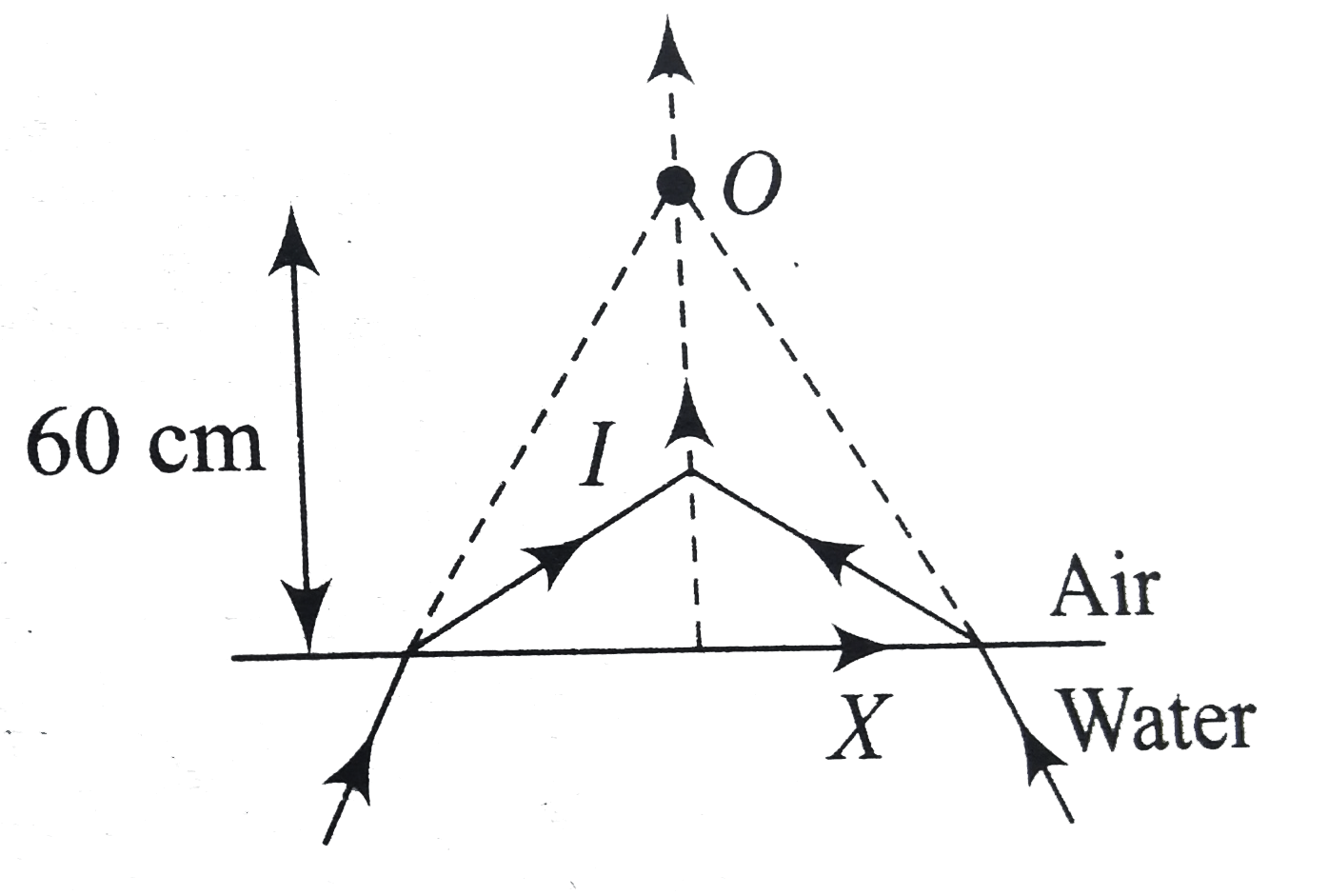
Topper's Solved these Questions
- BOOK - CENGAGE PHYSICS ENGLISHCHAPTER - GEOMETRICAL OPTICSEXERCISE - Exercise1.412videos
GEOMETRICAL OPTICS
- BOOK - CENGAGE PHYSICS ENGLISHCHAPTER - GEOMETRICAL OPTICSEXERCISE - Exercise1.522videos
GEOMETRICAL OPTICS
- BOOK - CENGAGE PHYSICS ENGLISHCHAPTER - GEOMETRICAL OPTICSEXERCISE - Exercise1.220videos
GEOMETRICAL OPTICS
- BOOK - CENGAGE PHYSICS ENGLISHCHAPTER - ELECTRON,PHONTS,PHOTOELECTRIC EFFECT & X-RAYSEXERCISE - dpp 3.315videos
ELECTRON,PHONTS,PHOTOELECTRIC EFFECT & X-RAYS
- BOOK - CENGAGE PHYSICS ENGLISHCHAPTER - HEATING EFFECT OF CURRENTEXERCISE - Thermal Power in Resistance Connected in Circuit27videos
HEATING EFFECT OF CURRENT
Similar Questions
A converging bundle of rays travel from water (refractive index 4/3 ) to glass (refractive index 1.5) through a convex interface of radius 16cm. In the absence of the interface, The rays would have converged to a point 32 cm from the pole of the interface. Where will the rays actually meet after refraction?
View SolutionIn the given figure rasy incident on an interface would converge 10cm below the interface if they continues to move in straight lines without bending. But due to refraction, the rays will bend and meet some where else. Find the distance of meeting point of refracted rasy below the interface, assuming the rays to be making small angles with the normal to the interface.
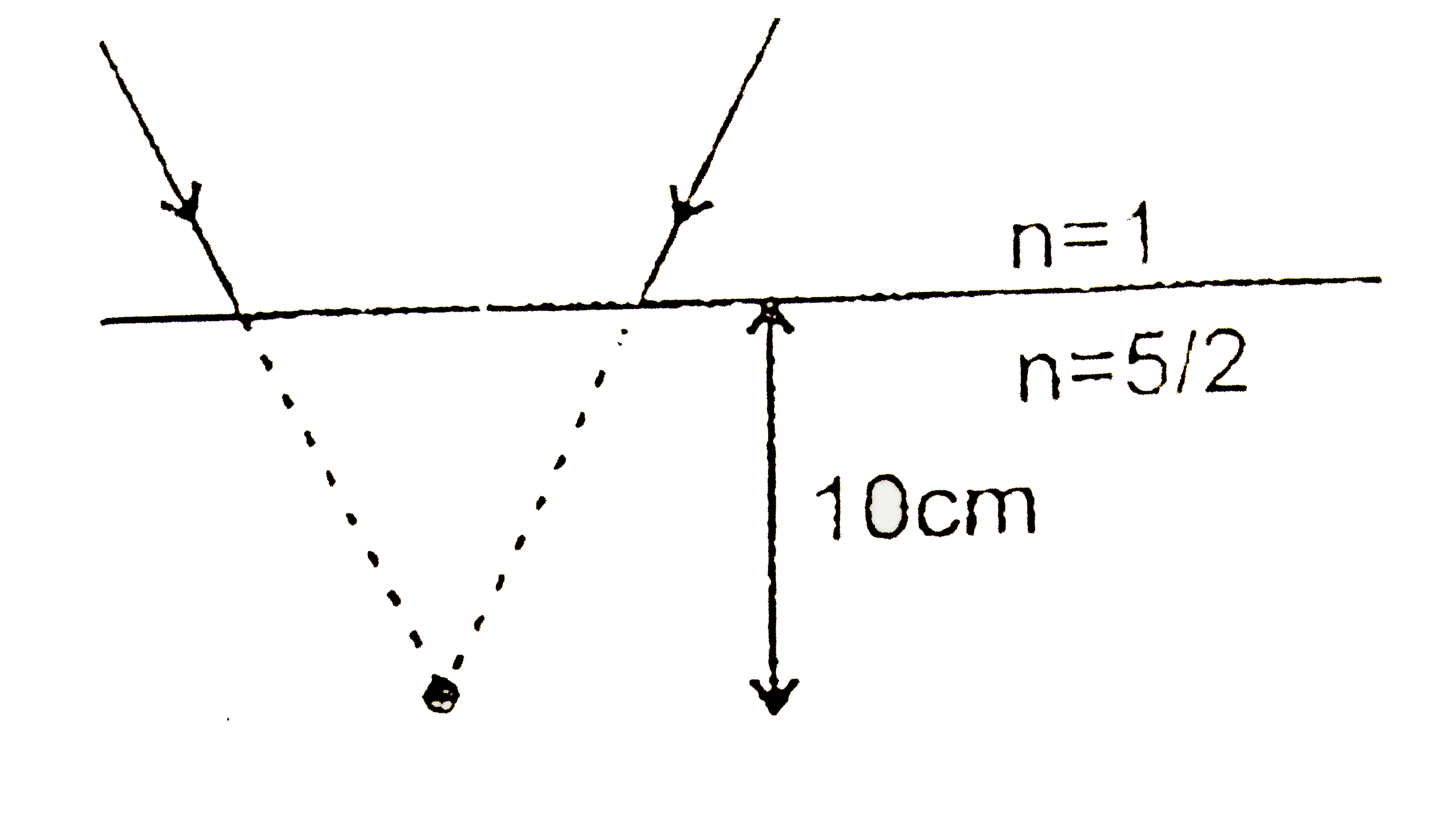 View Solution
View SolutionA convergent beam is incident on two slabs placed in contact as shown in fig. Finally the rays are converge at a distance (from left face of slab A is )
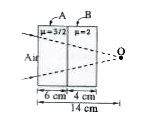 View Solution
View SolutionWhat is the angle of incidence when incident Ray is normal to the interface between the 2 media?
View SolutionA converging beam of rays is incident on a diverging thin lens. Having passed through the lens the rays intersect at a point 15cm from the lens. If lens is removed the point where the rays meet will move 5cm closer towards the mounting that holds the lens. The focal length of lens is
View SolutionA converging beam of rays is incident on a diverging lens. Having passed through the lens the rays intersect at a point 15cm from the lens. If the lens is removed, the point where the rays meet, move 5cm closer to the mounting that holds the lens. Find the focal length of the lens.
View SolutionThe diagram below shows a light ray striking and reflecting from a plane mirror AO is the incident ray and OB the reflected ray. The angle between the incident ray and the reflected ray is 120∘.
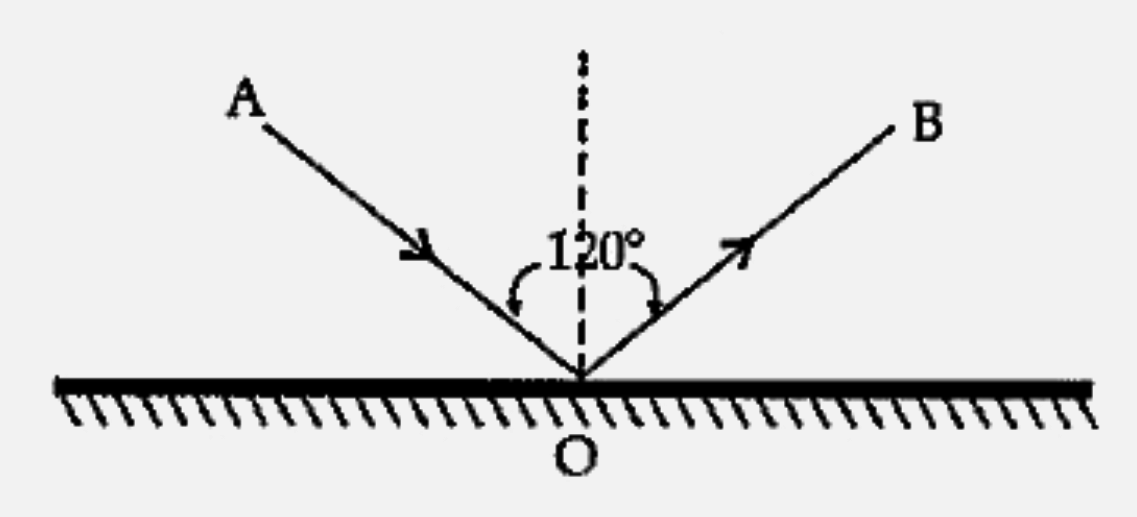
If the image of an object is formed 5 cm behind the mirror, what is the distance between the image and the object?View SolutionA converging bundle of rays is intercepted by a biconcave lens. The radii of curvature of both surfaces are 20cm and the refractive index of the material of the lens is 1.5. If the rays originially converged to a point 10cm in front of the lens, where will they now converge after passing through the lens?
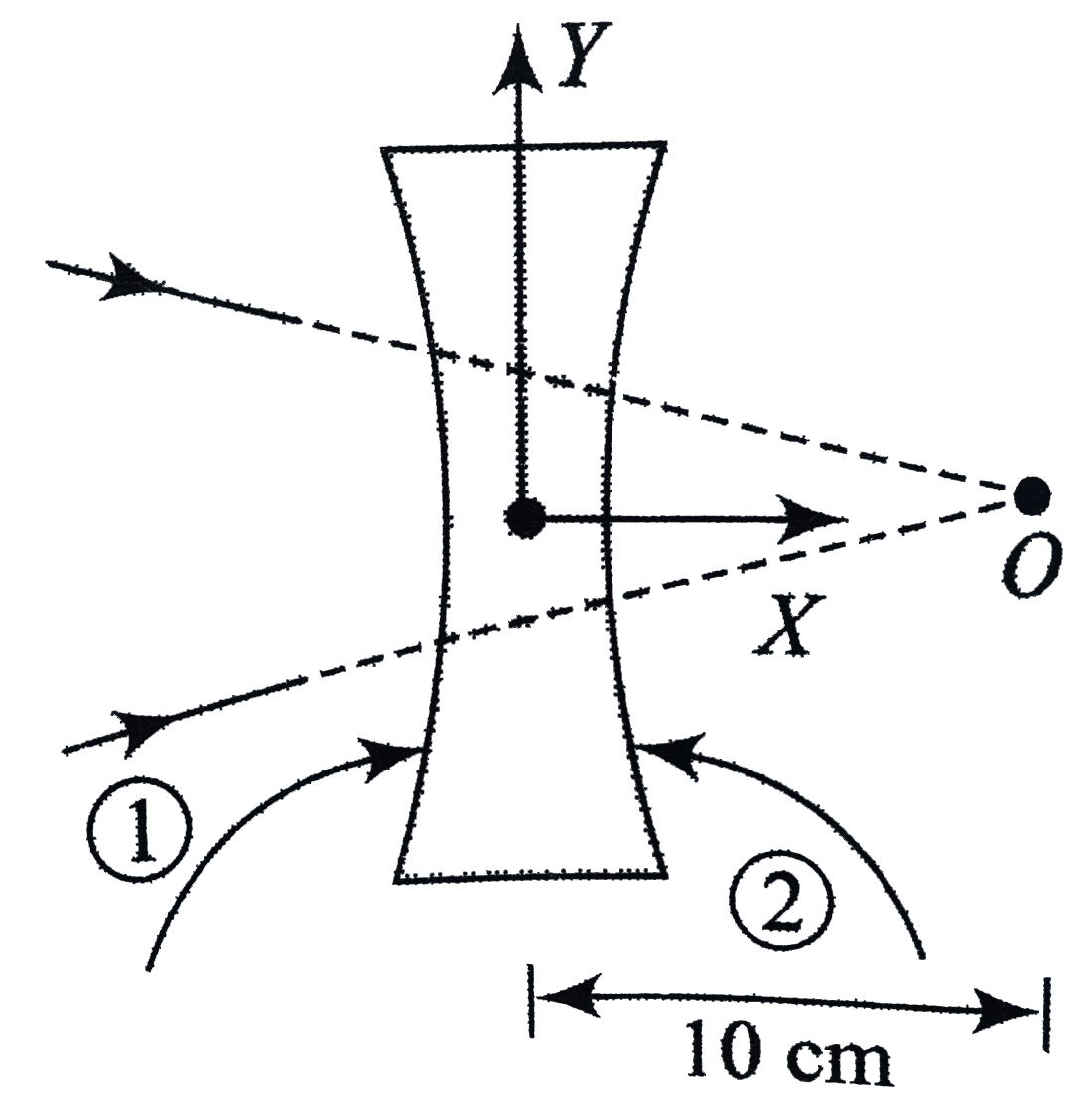 View Solution
View SolutionA light ray travelling in glass medium is incident of glass- air interface at an angle of incidence θ. The reflected (R) and transmitted (T) intensities, both as function of θ, are plotted The correct sketch is
View SolutionA point source of light S is placed on the major optical axis of the concave mirror at a distance of 60 cm. At what distance from the concave mirror should a flat mirror be placed for the rays to converge again at the point S having been reflected from the concave mirror and then from the flat one? Will the position of the point where the rays meet change if they are first reflected from the flat mirror? The radius of the concave mirror is 80 cm.
View Solution

